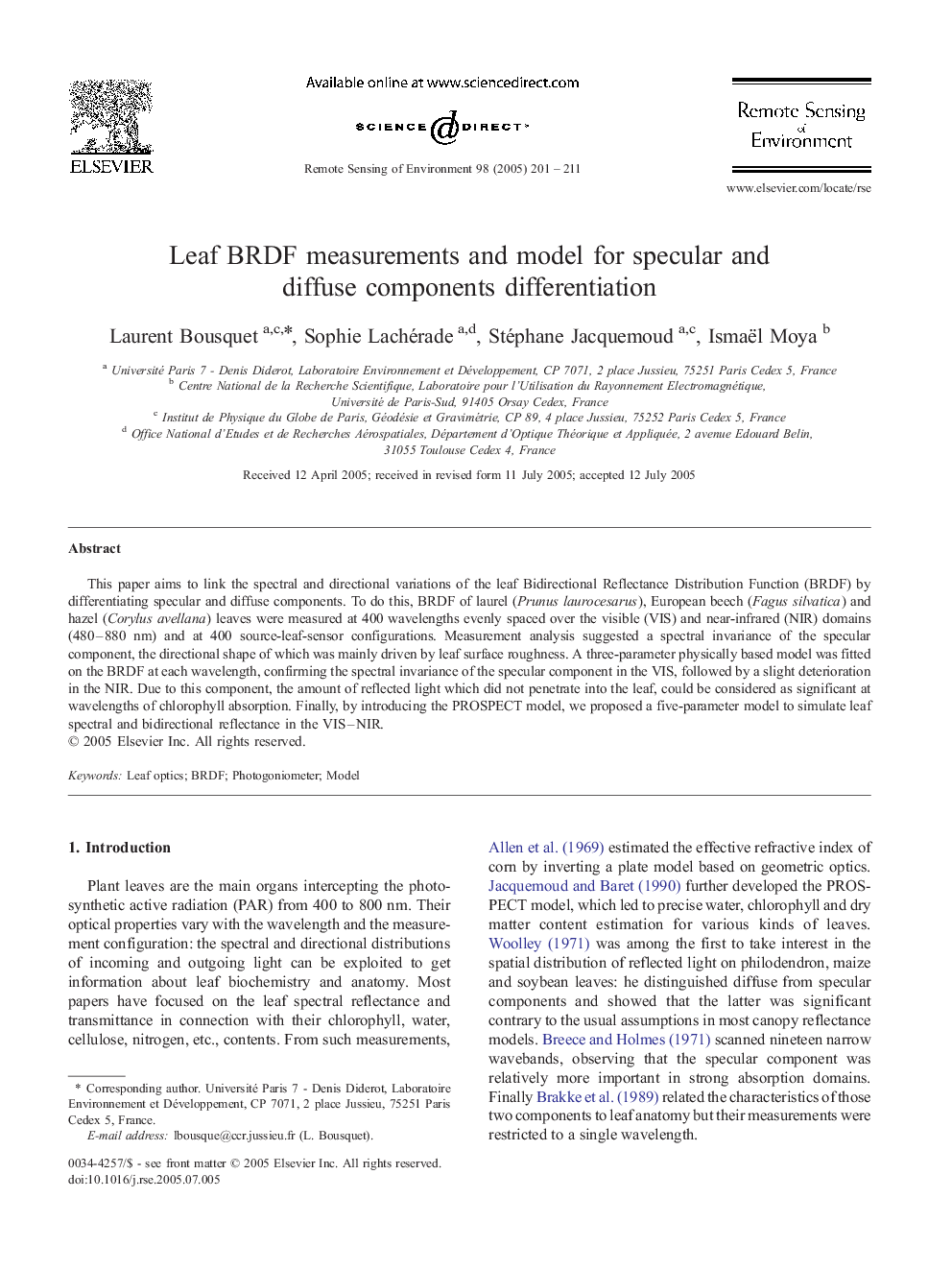| Article ID | Journal | Published Year | Pages | File Type |
|---|---|---|---|---|
| 10114078 | Remote Sensing of Environment | 2005 | 11 Pages |
Abstract
This paper aims to link the spectral and directional variations of the leaf Bidirectional Reflectance Distribution Function (BRDF) by differentiating specular and diffuse components. To do this, BRDF of laurel (Prunus laurocesarus), European beech (Fagus silvatica) and hazel (Corylus avellana) leaves were measured at 400 wavelengths evenly spaced over the visible (VIS) and near-infrared (NIR) domains (480-880 nm) and at 400 source-leaf-sensor configurations. Measurement analysis suggested a spectral invariance of the specular component, the directional shape of which was mainly driven by leaf surface roughness. A three-parameter physically based model was fitted on the BRDF at each wavelength, confirming the spectral invariance of the specular component in the VIS, followed by a slight deterioration in the NIR. Due to this component, the amount of reflected light which did not penetrate into the leaf, could be considered as significant at wavelengths of chlorophyll absorption. Finally, by introducing the PROSPECT model, we proposed a five-parameter model to simulate leaf spectral and bidirectional reflectance in the VIS-NIR.
Keywords
Related Topics
Physical Sciences and Engineering
Earth and Planetary Sciences
Computers in Earth Sciences
Authors
Laurent Bousquet, Sophie Lachérade, Stéphane Jacquemoud, Ismaël Moya,
